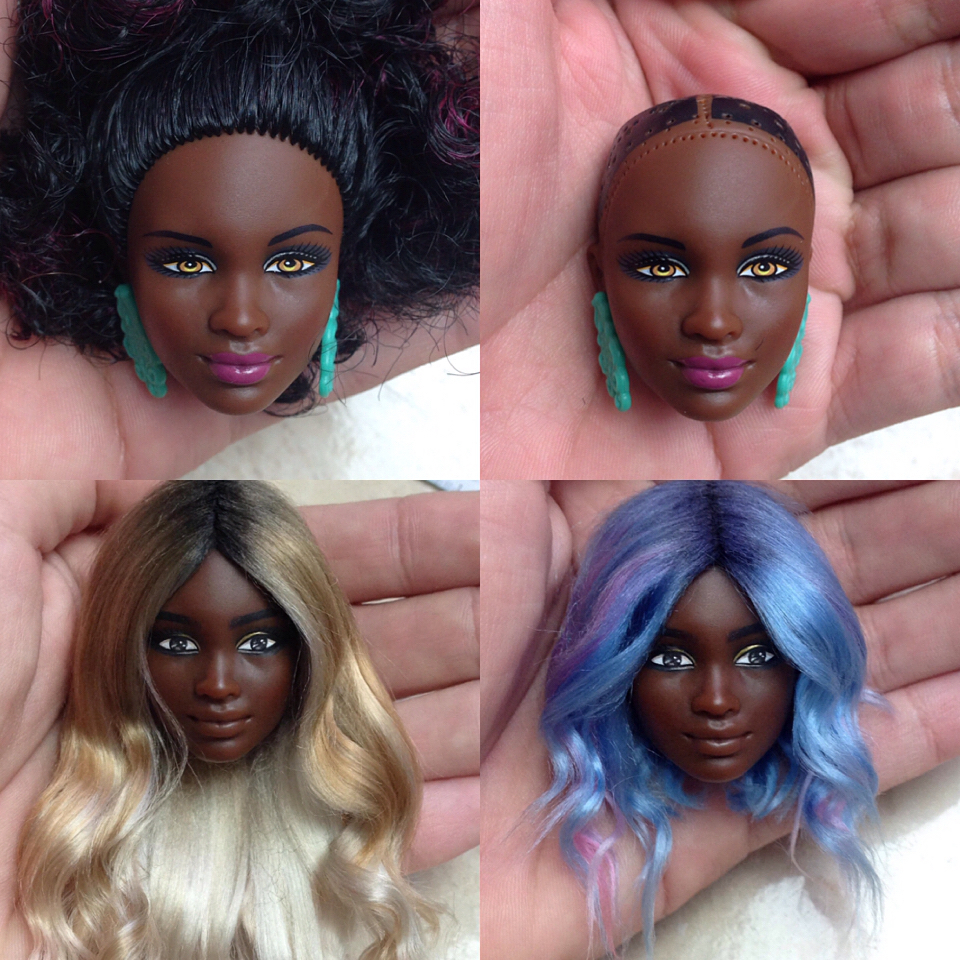The world is wigging out for wigs, and not since the 18th century have they been so popular. As Nicki Minaj wisely claimed back in 2012, “every female in the game wears wigs”. Keira Knightley too has confessed to having secretly worn one for five years. Fellow enthusiast Sia actually serves more wig than face and Cardi B must’ve bought a warehouse to house her collection by now. Hell, even I’ve got a wig. But that’s another story.
Also big on the wig scene is Brazilian hairdresser, Rafinha Silva who started his wig making business after struggling to find a job in media. However, his clientele is a little different from the pop divas, supermodels, and drag queens the industry is used to, though you may still have heard of them. He makes them for your favourite plastic dream doll, Barbie. But this isn’t about coiffering your generic blonde updo, this is about creating diverse looks inspired by real women.
“When I create a doll I’m not idealising the perfect woman,” he tells i-D. “I’m trying to create a realistic beauty. That means she can have all kinds of hair.” Much like wig-making for living and breathing customers, the journey to a new ‘do is a long one. “The process of making a wig starts from the choice of hair model,” Rafinha tells i-D. “I then find the appropriate fibre for the type of cut chosen, whether that’s curly, short or smooth. After I have removed all the original strands of hair from the doll, I measure its head in order to make sure the wig is a perfect fit.”
Rafinha often does their make-up too, though he doesn’t consider himself a make-up artist, more of a “plastic artist”. These make-overs tend to be more make-unders, given the unrealistic features of factory painted Barbie faces. “When I think of beauty, I think of diversity. Different hair texture, eye colour, unique facial features and expressions really bring out the beauty in each doll.”
After being inspired during his childhood by his mother, who was always changing her hair colour and style, Rafinha realised beauty comes from individuality, something that is reflected in his work. “The make-up massively varies according to the doll owner’s wishes,” he says. “Sometimes I’ll remove all the original painting from the factory, other times the client asks only to change the lipstick or the eyebrows, or just apply some eyelashes.”
Over the years, Barbie has been criticised for promoting unrealistic standards of both beauty and body image. As well as the matter of diversity or lack thereof. But Rafinha’s work is (un)living proof that we can break the restrictive Barbie mould. “I can not find an explanation for what I do,” he says. “It is part of me, and I am part of it, and am very grateful.”
Get i-D straight into your inbox by signing up for our newsletter!
